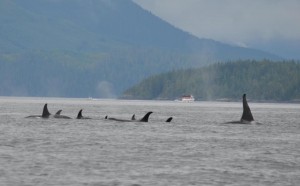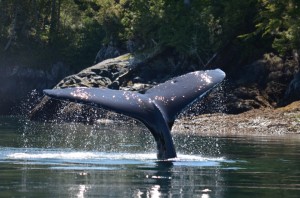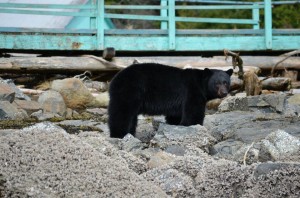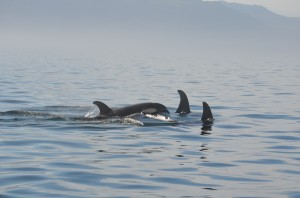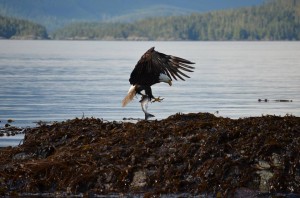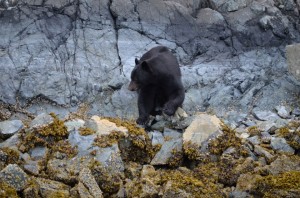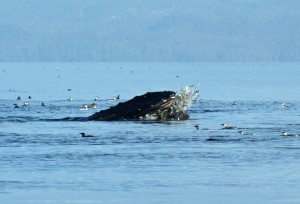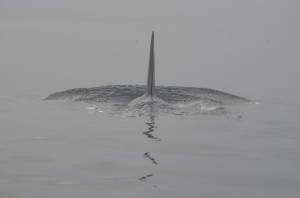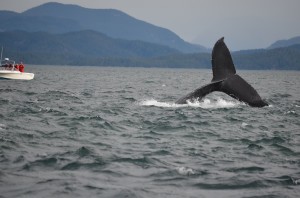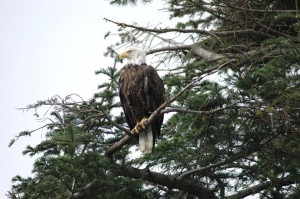
“Bald eagles are believed to mate for life. A pair constructs an enormous stick nest—one of the bird-world’s biggest—high above the ground and tends to a pair of eggs each year. Immature eagles are dark, and until they are about five years old, they lack the distinctive white markings that make their parents so easy to identify. Young eagles roam great distances. Florida birds have been spotted in Michigan, and California eagles have traveled all the way to Alaska.” A quote from National Geographic. In our viewing area eagles are common on the whale watching and grizzly bear tours until the salmon have arrived in the rivers in mid-August. At this time the eagles move to the rivers and are less common on whale watching days bur still enough for good pictures.
